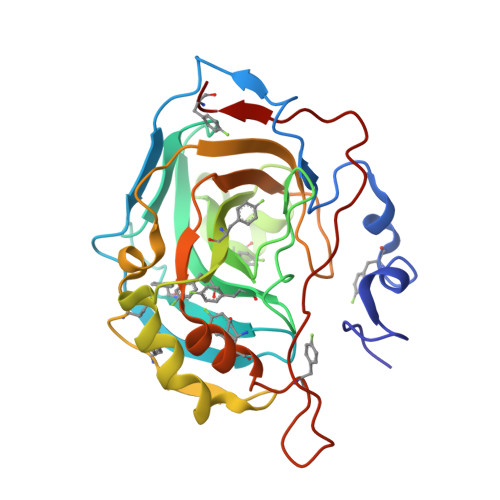Controlling the incorporation of fluorinated amino acids in human cells and its structural impact.
Costantino, A., Pham, L.B.T., Barbieri, L., Calderone, V., Ben-Nissan, G., Sharon, M., Banci, L., Luchinat, E.(2024) Protein Sci 33: e4910-e4910
- PubMed: 38358125
- DOI: https://doi.org/10.1002/pro.4910
- Primary Citation of Related Structures:
8P6U, 8PHL, 8Q0C - PubMed Abstract:
Fluorinated aromatic amino acids (FAAs) are promising tools when studying protein structure and dynamics by NMR spectroscopy. The incorporation FAAs in mammalian expression systems has been introduced only recently. Here, we investigate the effects of FAAs incorporation in proteins expressed in human cells, focusing on the probability of incorporation and its consequences on the 19 F NMR spectra. By combining 19 F NMR, direct MS and x-ray crystallography, we demonstrate that the probability of FAA incorporation is only a function of the FAA concentration in the expression medium and is a pure stochastic phenomenon. In contrast with the MS data, the x-ray structures of carbonic anhydrase II reveal that while the 3D structure is not affected, certain positions lack fluorine, suggesting that crystallization selectively excludes protein molecules featuring subtle conformational modifications. This study offers a predictive model of the FAA incorporation efficiency and provides a framework for controlling protein fluorination in mammalian expression systems.
Organizational Affiliation:
CERM - Magnetic Resonance Center, Universit¨¤ degli Studi di Firenze, Sesto Fiorentino, Italy.

















